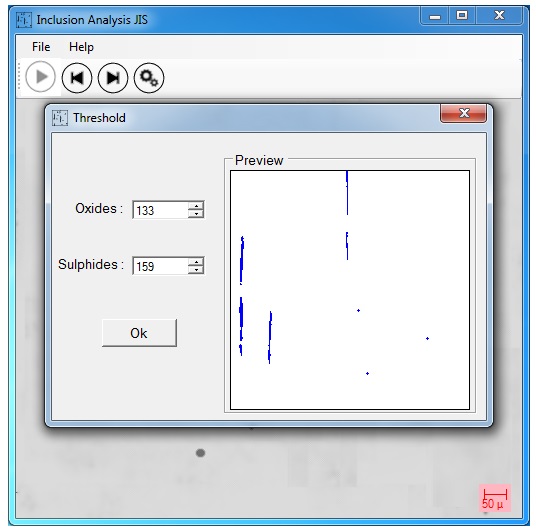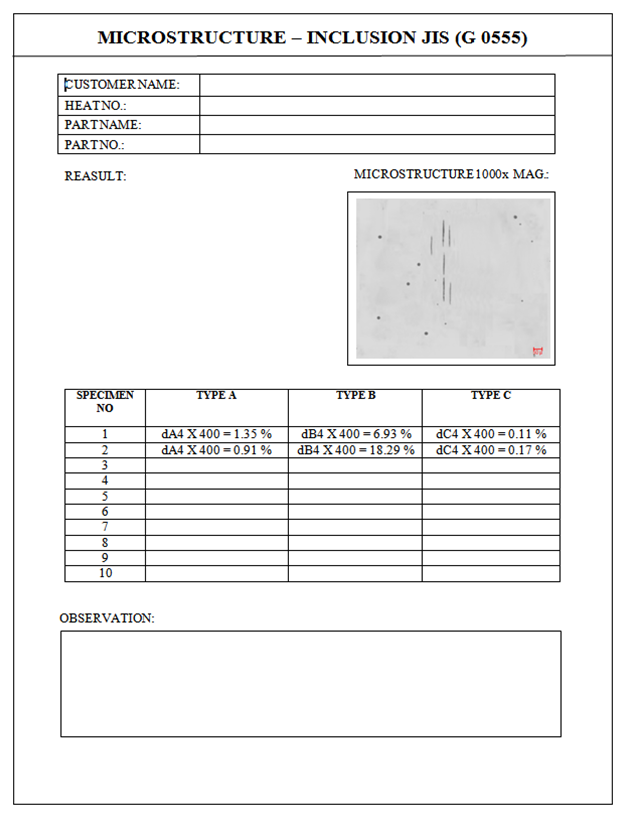Inclusion Analysis (JIS))
Inclusion Analysis (JIS)
- Inclusion Types: Type A, Type B, Type C
- Reporting:Results are documented according to JIS G 0555:2023, including types and quantities of inclusions found, with visual documentation.
- Standard Compliance: JIS G 0555:2023.
Inclusion Analysis (JIS) Overview
Inclusion Analysis using the JIS G 0555:2023 standard is a critical process in evaluating the quality of steel by examining non-metallic inclusions. This analysis provides valuable insights into the manufacturing processes and the resulting characteristics of steel products. JIS G 0555:2023 provides a structured approach to analyzing non-metallic inclusions in steel, focusing on the specific types (A, B, C) that are critical for quality control and material performance.
Systems Specification
| Sr. No | Description |
|---|---|
| 1 | Standard Overview: JIS G 0555:2023 is a microscopic testing method for identifying non-metallic inclusions in steel. |
| 2 | Inclusion Types: Includes Type A (Sulfide), Type B (Oxide), and Type C (Silicate) inclusions. |
| 3 | Analysis Process: Involves sample preparation, microscopic examination, and inclusion identification. |
| 4 | Quantitative Assessment: Guidelines for quantifying number and area percentage of each inclusion type. |
| 5 | Reporting: Results documented according to JIS G 0555:2023, including types and quantities of inclusions. |
| 6 | Quality Assurance: Helps understand the impact of inclusions on steel properties, contributing to quality control. |
| 7 | Material Performance: Optimizes processing parameters to reduce undesirable inclusions, enhancing properties. |
| 8 | Regulatory Compliance: Assists in meeting industry standards and regulatory requirements through accurate reporting. |


